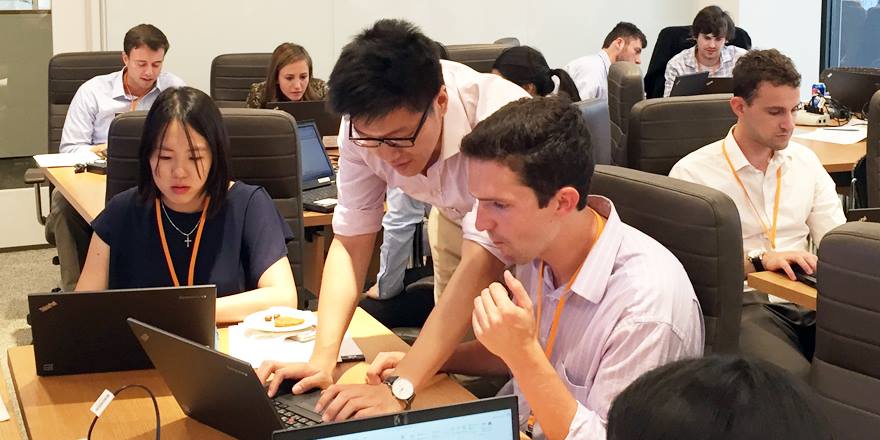I visited my alma mater recently and an old friend, still in school, asked me what I did on the outside. I told him. He replied that I shared a lot of buzzwords. While we can debate whether or not that was true (it wasn’t, and since I am the one writing, you are only going to hear my side), sometimes buzzwords can seem like the only way to communicate—in your first year at CRA, you dive into an ocean of new responsibilities with a whole new vocabulary, and in that first year, you learn an entirely new set of skills to swim in it.
 Running the gamut from the technical to the analytical, the statistical and the presentational, the interpersonal and don’t-forget-the-communicational, the number of skills you gain leaving college and coming into CRA expands throughout your first year. This process begins during the orientation and on-boarding training for all first-year analysts, called Research and Analysis Core training (RAC). There, you learn a raft of skills necessary to navigate your first month, such as how to work on small teams and introductions to different coding programs used for analysis. However, coming out of school and integrating into the firm, one of the most important skills you learn in this initial process are the most nebulous—work-ethic expectations, building relationshipsto invest in, and how you are expected to treat your co-workers, all aspects that can fall under the umbrella of office culture.
Running the gamut from the technical to the analytical, the statistical and the presentational, the interpersonal and don’t-forget-the-communicational, the number of skills you gain leaving college and coming into CRA expands throughout your first year. This process begins during the orientation and on-boarding training for all first-year analysts, called Research and Analysis Core training (RAC). There, you learn a raft of skills necessary to navigate your first month, such as how to work on small teams and introductions to different coding programs used for analysis. However, coming out of school and integrating into the firm, one of the most important skills you learn in this initial process are the most nebulous—work-ethic expectations, building relationshipsto invest in, and how you are expected to treat your co-workers, all aspects that can fall under the umbrella of office culture.
Learning more specified skillsets heats up once you leave general training and join your practice. Once there, every member of the practice pitched in to bring me up to speed in some way—whether it was an associate going over a particularly tricky coding problem with me, or a vice president sitting down and having a higher-level discussion of the US mortgage market. This one-on-one based program quickly brings you up to speed, and once you are, the analyst label fades fast and you are treated like any other member of the junior staff.
These are high expectations from the beginning, and so one of the first and most important things you learn to do is to manage your work stream. In my practice, we work on shorter-duration projects, typically around a month long, and you are almost always working on more than one. Managing this effectively requires almost your entire skill toolbox. When you have three project managers each coming to you and giving you a this-needs-to-be-done-now task, delivering a polished, client-ready, timely product for all three takes trust and effective communication, not to mention focus and a level-head so that you do not get flustered and make silly mistakes. In addition, managing your own work before it reaches this point becomes incredibly important as well. Often, what can be just as harmful as doing something quick and sloppy can be doing something too slowly and too meticulously. For instance, a large national bank may be under allegations of mortgage discrimination, and they come in and ask you to analyze their lending portfolio. You might spend days and days creating a beautiful, gleaming statistical model measuring levels of alleged discrimination in the underwriting of mortgages—but what the client really was focusing on was the pricing, not the underwriting. You got hung up on the wrong details, and now you are scrambling to get the project finished on time. This last point in particular is invaluable because so little of this can be pre-taught or brought with you from other experiences. The only true way to effectively do this is to have that deeper industry knowledge and broader, client-focused perspective, rather than simply getting from Point A to Point B and not worrying about why we want to get there in the first place. Fortunately, there is time to get there – and in your first year at CRA, you will.
CRA through the decades - Michael "Mike" Loreth
What was life like working in the 1970s? “Things were quite a bit different at CRA in the late 1970’s and early 1980’s. There was no internet and most of our...

